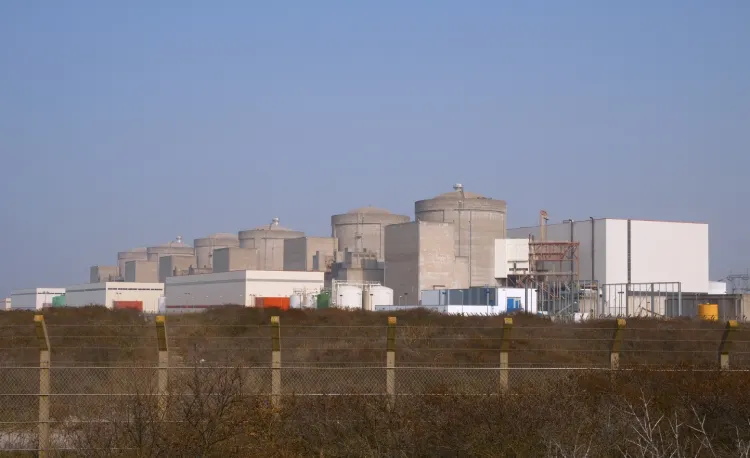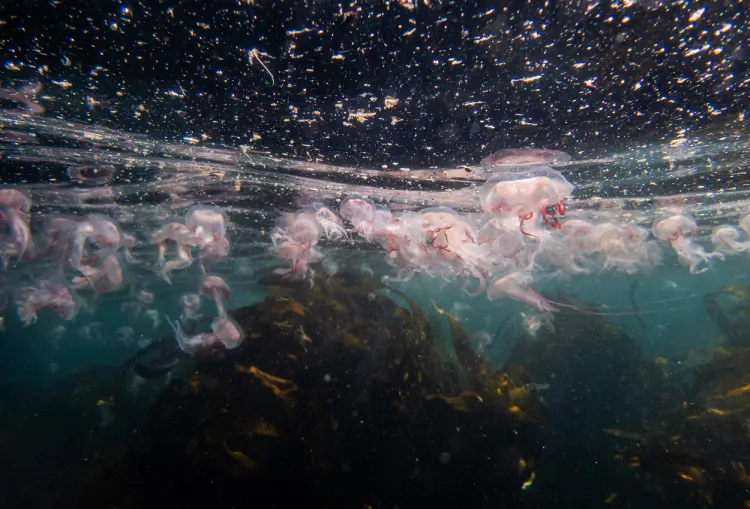
Jellyfish Swarm Shuts Down France’s Largest Nuclear Plant
Massive Marine Bloom Forces Full Closure of Gravelines Reactors, Raising Concerns Over Climate-linked Threats to Coastal Power Stations
A sudden surge of jellyfish has forced a complete halt at the Gravelines nuclear power facility in northern France, the largest in Western Europe. The dense swarm blocked the plant’s cooling system filters, prompting automatic shutdowns of four reactors late Sunday night and early Monday.
The site’s remaining two units were already undergoing maintenance, leaving the plant entirely out of service. Authorities confirmed there was no danger to the public or the environment, but experts note the incident underscores how warming seas and invasive species can threaten essential energy systems.
Sudden Shutdown Across Multiple Reactors

The shutdown began just before midnight on Sunday when reactors 2, 3, and 4 automatically went offline after their pumping station filters became packed with jellyfish. By early Monday morning, reactor 6 was also forced to shut down for the same reason. The plant’s operator, EDF, said teams were mobilised immediately to clear the blockages and inspect systems.
Initially, the company indicated the affected units might restart quickly, but the timetable has since been revised. Unit 6 is expected to return first, followed by one unit per day, with full output restored by the end of the week. The delay comes amid a broader European heatwave, which has placed additional strain on cooling systems and water intake processes.
Gravelines, located on the coast between Dunkirk and Calais, plays a critical role in France’s electricity supply. Each of its six reactors can produce 900 megawatts of power, and EDF plans to add two next-generation reactors of 1,600 megawatts each by 2040.
Climate Change and Invasive Species Behind the Surge
Marine biologists say the swarm was likely linked to warmer sea temperatures, which extend the breeding season for jellyfish and allow populations to grow rapidly. Jellyfish reproduce more rapidly in warmer waters, and rising temperatures in regions such as the North Sea have extended their breeding season, allowing populations to grow over a longer period each year.
Adding to the issue is the arrival of invasive species. Experts believe such species, like the Asian Moon jellyfish, can hitch rides in ships’ ballast water, traveling across oceans before being released into new environments. These jellyfish thrive in calm, plankton-rich waters such as harbors, canals, and nuclear plant intake zones — the perfect breeding grounds for large blooms.
Similar events have caused disruptions in nuclear plants in China, Japan, and India, as well as in European facilities. In 2011, Scotland’s Torness nuclear plant experienced a shutdown due to jellyfish, and Sweden reported a major incident in 2013.
Lessons for Energy Infrastructure
While EDF has confirmed there was no safety incident or radioactive leak, the shutdown illustrates a growing vulnerability for coastal power plants worldwide. Cooling systems for nuclear reactors, as well as for some fossil fuel and desalination plants, rely on large volumes of seawater. Sudden blockages from marine life — jellyfish, seaweed, or even fish — can trigger automatic safety shutdowns to prevent overheating.
Experts suggest that operators may need to invest in early-warning systems, marine monitoring, and improved filtration technology to reduce the risk of future shutdowns. Such measures could involve underwater sensors, predictive modeling using ocean temperature data, and physical barriers or nets to keep jellyfish away from intake pipes.
For now, France’s power grid remains stable, with EDF drawing on other sources including solar, wind, and interconnections with neighboring countries to offset the loss of Gravelines output. But as oceans continue to warm and invasive species spread, incidents like this may become more common — and more challenging to manage.
[Source]




